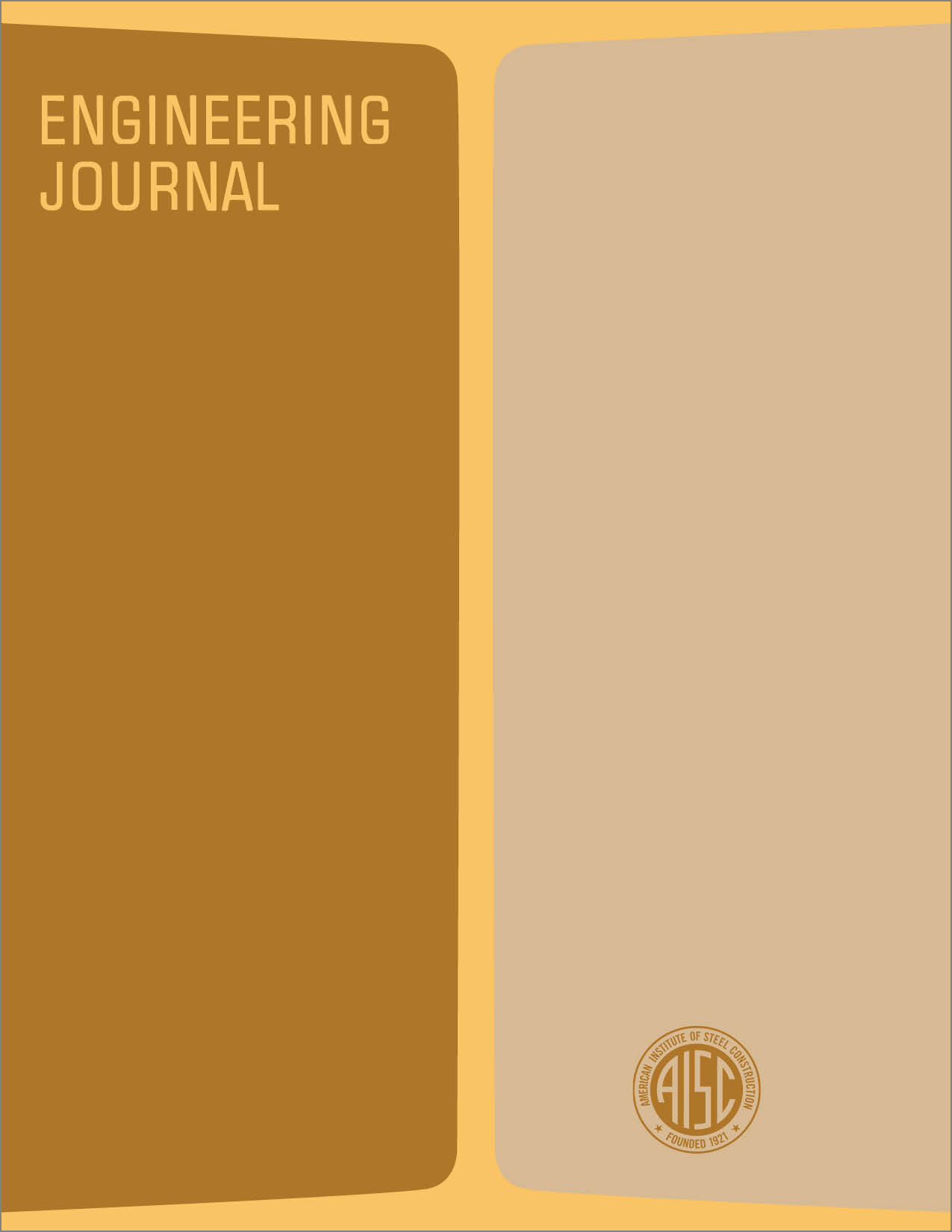Behavior of Bearing Critical Double-Angle Beam Connections
DOI:
https://doi.org/10.62913/engj.v15i4.324Abstract
The design of bolted connections generally incorporates limiting or allowable loads or stresses on the fastener and on the connected parts in such a way that the strength of the connected part or member, not that of the fastener, governs the ultimate behavior of the structure. For simple bolted lap splices, the net section strength, the bearing strength, and the fastener shear strength are evaluated in terms of nominal stresses for a particular loading to determine the adequacy of the connection detail. In an effort to ensure that one of the basic strength mechanisms of the connected member will control the ultimate behavior, the fastener allowable stresses have traditionally been quite conservative. While the philosophy of ensuring that member failure governs is reasonable, a critical evaluation of recent bolted connection research by Fisher and Struik has led to recommendations of higher allowable shearstresses on bolts (potentially, 20 to 30 percent fewer bolts are required according to the shear stress requirements). However, a margin of safety is maintained for member control of behavior. The bearing strength criteria were also reevaluated and higher allowable bearing stresses based on a new bearing strength model were recommended.

